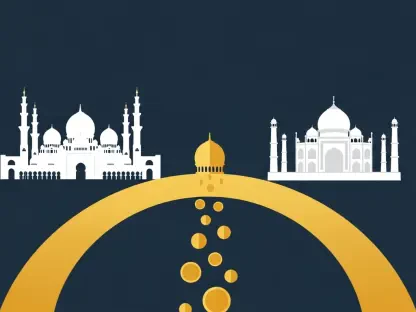Introducing Kofi Ndaikate, a distinguished expert in the fast-evolving landscape of fintech who offers invaluable insights into the intricate world of digital transformation. With a wealth of knowledge across blockchain, cryptocurrency, and the essential regulations guiding these technologies, Kofi’s perspectives are both enlightening and timely. Join us as we delve into a conversation that spans the nuances of customer interactions and advancements in financial security technologies.
Could you explain the system that detects irritation in call center interactions?
The system is quite fascinating as it uses advanced voice analytics to detect irritation in customer interactions. It does this by monitoring shifts in pitch, tenor, inflection, and the duration of pauses. It captures these vocal elements much like a human would, identifying frustration even if the words themselves don’t directly express displeasure.
How does the system identify cues of irritation across different cultures and languages?
The system is designed to handle a variety of cultural and linguistic nuances by focusing on universal vocal cues. It relies on patterns in sound that often accompany irritation, which don’t vary as much between languages as one might think. It’s about the tone rather than the language.
What specific vocal elements does the system analyze to determine irritation?
It looks at changes in pitch, the stress on particular words, the pace of speech, how long pauses last, and overall vocal sharpness. For instance, an increase in volume or a more clipped response might signal rising frustration.
How accurate is this system, and are there situations where it might misinterpret cues?
While the system is generally accurate, it can face challenges with sarcasm or when dealing with individuals who naturally have a more reserved tone, sometimes leading to false positives or missing subtle cues of irritation.
You talked about a conversation with a cab driver regarding financial technologies. What were some of the key concerns about moving away from cash that the driver raised?
The driver expressed concerns about accessibility and trust. He questioned how relying solely on digital transactions might impact those without easy access to banking services and how secure and dependable these new technologies are.
How did you address those concerns about building credit scores and security?
I explained how digital transactions could help individuals build credit scores due to better tracking of financial behavior. Regarding security, I reassured him that technologies like biometric authentication are constantly improving, making digital payments safer.
The cab driver mentioned stories about facial recognition being misused during robberies. How prevalent are such incidents, and what’s the likelihood of them happening elsewhere?
These incidents, while alarming, aren’t common but they highlight potential vulnerabilities. The risk exists wherever facial recognition technology is used, but safeguards and advancements in tech aim to reduce these occurrences.
What steps can banks or financial institutions take to prevent such misuse?
Banks can implement multi-factor authentication, ensuring transactions need more than just facial recognition. Also, continuous updates and strict compliance with security protocols can mitigate risks.
There’s a suggestion that systems should be able to detect fear during a transaction. Why is it challenging to have systems detect emotions like fear or distress accurately?
Detecting emotions like fear is complex due to the variety of ways different people exhibit these feelings. physiological responses can vary greatly, making a one-size-fits-all approach difficult.
What technological or operational barriers exist in implementing such a feature?
The main barriers are the variability of human emotional responses and the technical challenge of accurately interpreting biometric data. Plus, implementing such technology would require extensive privacy safeguards and operational agreements across sectors.
Are there companies currently working on detecting emotions through biometric data?
Yes, a few companies are exploring this field, developing technologies to detect emotional states through biometrics, but it remains a sensitive and developing area.
You mentioned several reasons why detecting fear hasn’t been implemented in systems yet. What are the key technical and operational complications?
Technically, it’s about accurately interpreting complex emotional indicators. Operationally, it involves privacy concerns and potential misuse of personal data, alongside the need for consensus on the implementation standards.
How might privacy and resource management be concerns for implementing fear detection?
Privacy is a huge concern as emotional data can be sensitive. Effectively managing this without infringing on personal rights adds complexity, as does the resource allocation needed to process and respond to fear detection.
Is there potential for future development if demand grows for such technology?
Absolutely, as demand for enhanced security grows, so will the interest and investment in developing these technologies further, provided ethical and privacy challenges are addressed.
You discuss the importance of having a curious mind in technology and finance. How did the cab driver’s curiosity influence your perspective during the conversation?
The driver’s curiosity was contagious and refreshing. It reminded me that truly understanding technology’s impact requires diverse viewpoints and that we must regularly engage with different perspectives to foster growth.
Why is fostering curiosity important when discussing advancements in technology?
Curiosity drives innovation. It encourages us to ask tough questions, challenge assumptions, and continuously seek improvement, ensuring technological advances actually meet user needs.
What advice would you give to technology and financial sectors to improve user security without sacrificing innovation?
Balancing security and innovation requires a user-centered approach, transparent communication about privacy, and establishing robust partnerships with stakeholders to create standards that won’t impede innovation. It’s about proactive collaboration and continuous adaptation.









